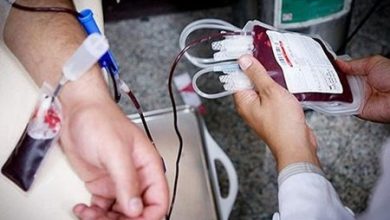
There are more than 100 different types of liver disease that have different causes including infections, alcohol and drug consumption, obesity, and cancer.
According to the informants, citing the medical journal “WebMD”, Sometimes liver damage or even liver failure and associated symptoms are severe or appear quickly. This complication may occur if you take too much acetaminophen or other medications. Herbal supplements, viruses, and autoimmune diseases can also cause this. But most of the time, liver disease and liver failure are chronic and occur gradually because the liver gets damaged slowly over time.
Early symptoms of liver disease include abdominal pain, lack of hunger, fatigue or lack of energy, and diarrhea. But sometimes other symptoms appear in the body that you may not know are the cause of liver problems. If you notice any of the following symptoms, you should see a doctor to check your liver function.
Yellowing of the skin or eyes (jaundice).
As liver damage increases, symptoms other than the initial symptoms of liver disease appear. Your skin may appear yellow along with the whites of your eyes. Doctors call this complication jaundice. Jaundice is caused by an increase in bilirubin in the blood.
* Itchy skin
Itchy skin from liver disease occurs when you don’t have a rash or anything else on your skin. Itching can make it difficult to do things like sleep, and it doesn’t go away if you rub the skin.
Flatulence (ascites)
Ascites is a condition in which fluid accumulates in the abdominal cavity. This complication has various causes, including liver diseases such as cirrhosis and gastrointestinal cancer, as well as hepatic vein obstruction. In patients with ascites, the abdomen is very large and presses against the navel. Sometimes ascites becomes infected and requires antibiotics. Sometimes ascites requires surgery.
Ankle swelling
In some people with ascites, the feet and ankles swell and accumulate fluid. Consuming less salt or taking medications that make you urinate more will help with this leg problem.
Pale stools and dark urine
The healthy function of the liver is the cause of the brown color of the stool. This color comes from the bile salts made by the liver. If the liver is not functioning normally, the stool will appear pale. Pale stools are often accompanied by yellowing of the skin (jaundice). Excess bilirubin, which makes your skin look yellow, can also make your urine unusually dark.
Fatigue and confusion
Many people with liver disease suffer from chronic fatigue. This may be due to a buildup of toxins because the liver is not getting rid of them as well as it should. Toxin buildup in the body and blood flow can also affect brain function. Therefore, you may become disoriented or have difficulty concentrating.
Skin bruises
While people with advanced liver disease are prone to bleeding, they are also more likely to develop blood clots and skin bruising.
the end of the letter









